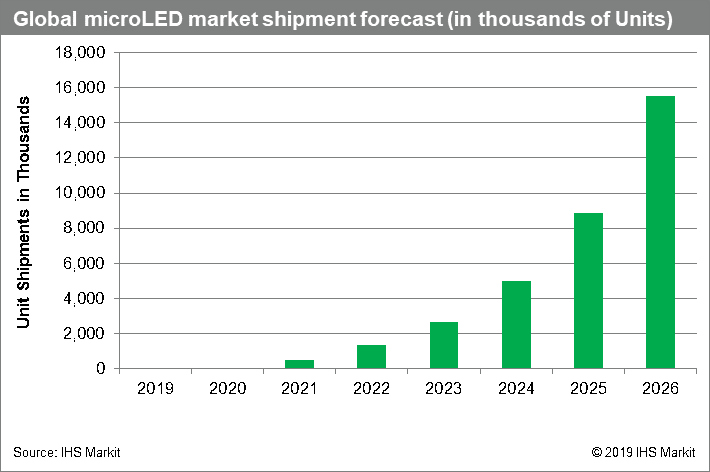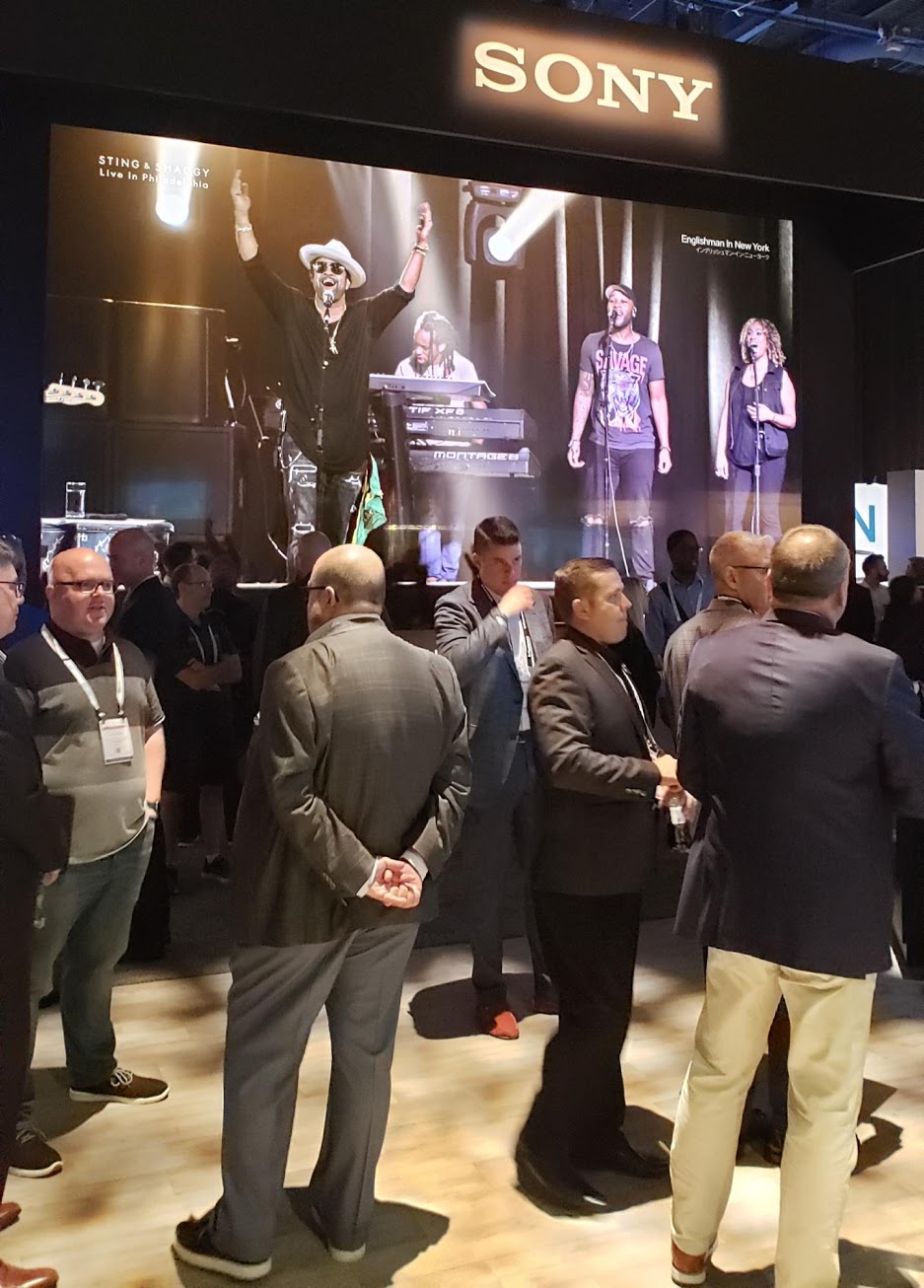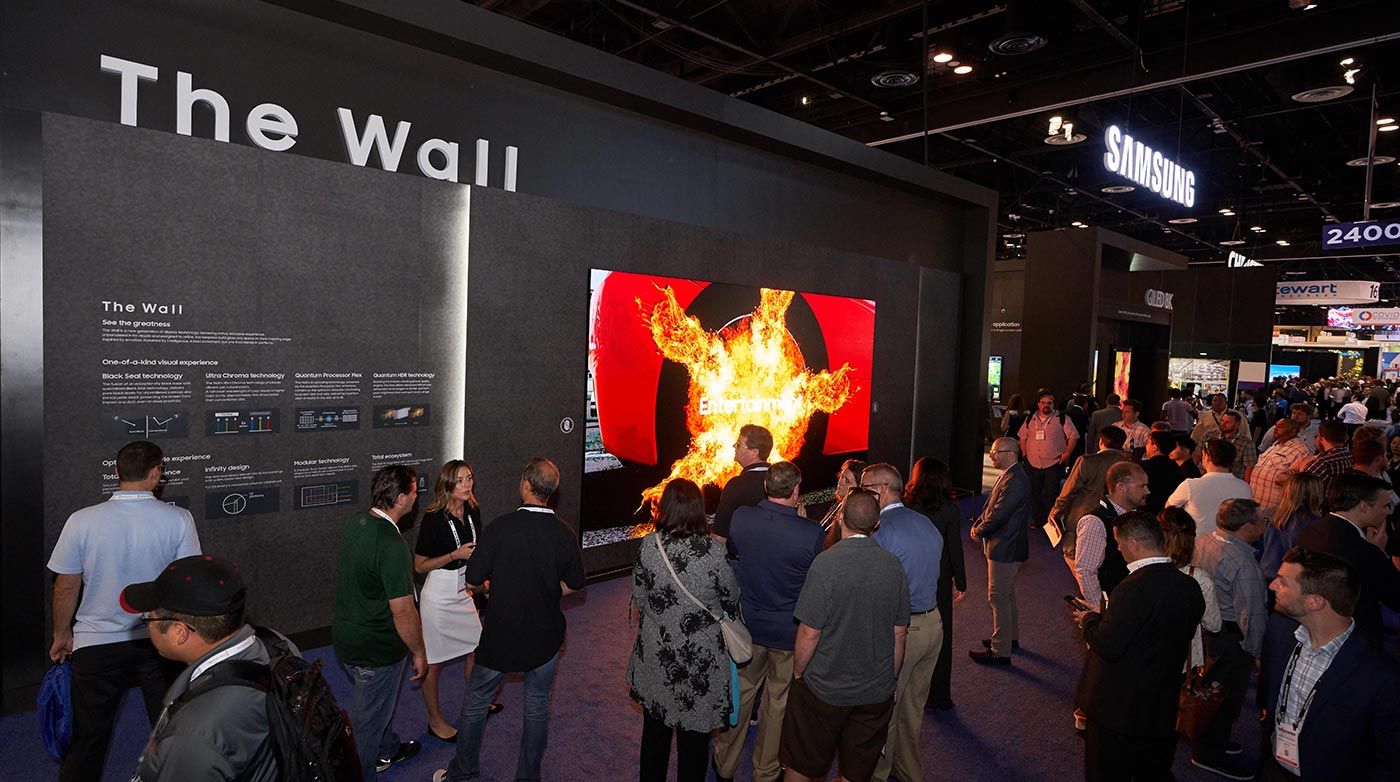
MicroLED, Barely A Thing Right Now, To Explode In Growth As Manufacturing Tech Matures
June 19, 2019 by Dave Haynes
The tech research firm IHS Markit says the day will come when big microLED display walls will not just be affordable by Arab royalty, Russian oligarchs and NBA free agents.
The global market for microLED displays is expected to grow to 15.5 million units by 2026, driven by steep declines in manufacturing costs, says the firm in the newly released IHS Markit Micro LED Display Technology & Market report.
At the moment, and into next year, microLED shipments are expected to total less than 1,000. “However,” says IHS, “with manufacturing costs plunging during the coming years, microLED pricing will drop as well, allowing the technology to gradually find acceptance in applications including smart watches, televisions, augmented-reality systems and smartphones.”
“Despite their extremely high price tag compared to conventional LCD and OLED panels, microLED displays offer advantages in brightness and energy efficiency that make them an attractive alternative for ultra-small and ultra-large applications,” says Jerry Kang, associate director at IHS Markit. “The manufacturing process for microLED will allow suppliers to reduce their production costs over time. Once the process matures, microLED sales will begin to rise.”
IHS suggests the manufacturing cost of a 75-inch display will drop to one-fifth of its current expense by 2026. I’m not sure that a 75-inch microLED display panel exists right now, but if it did, it would probably cost north of $50,000, maybe $100,000???
MicroLED displays are composed of arrays of microscopic LEDs, each of which represents an individual pixel. Manufacturing these displays involves picking up massive numbers of LED chips from epitaxial wafers and placing them on target substrates, a process known as mass transfer.
The whole mass transfer thing is a big part of the cost reduction. Right now, conventional direct view LEDs are made using robotic pick and place machines that transfer one LED light at a time. The machines are blindingly fast, but even with that, it would take days or weeks to pick and place manufacture a 75-inch microLED. A 4K microLED screen would need about 25 million LED chips.
Mass transfer manufacturing, says IHS, is expected to reach a maturity threshold in 2024. “Despite the growth in acceptance, microLED shipments in 2026 will still amount to just 0.4 percent of the global flat-panel display market,” Kang says. “However, with shipments of nearly 16 million units that year, microLED will have entered mass-market territory, setting the stage for much wider acceptance during the following years.”

The only large format microLED product actively sold on the market is Sony’s CLED, or Crystal Display. LG showed a proof of concept microLED last week at Infocomm.

Samsung markets its gorgeous The Wall product as microLED, but display nerds say it is miniLED, which is bigger. I have no idea and the marketing material doesn’t really get into that (at least what I have seen). Both the CLED and The Wall are stunning, and $,$$$,$$$.
If you are struggling to get your kids to sleep, you can explain to them that microLED is generally defined as LED devices that are less than 100 microns in diameter, whereas miniLED is 100 to 300 microns. Microns and micrometers are the same thing, from what I can figure out. And both equate to one thousandth of a millimeter, or one millionth of a meter.
That will put them out cold.




Leave a comment